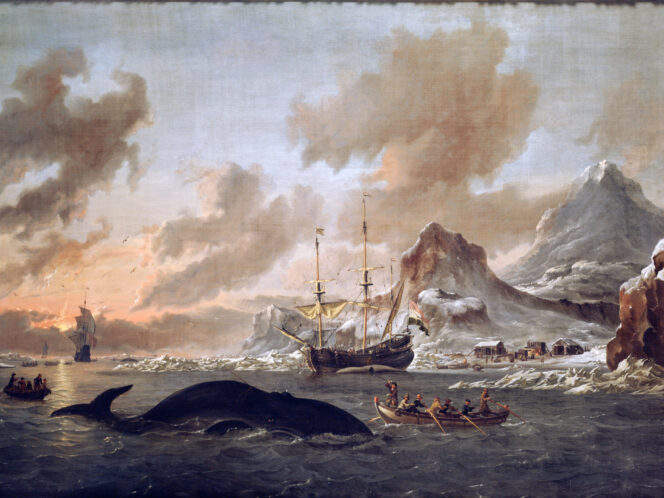
The Barents Sea is my route to work. I sail through it on a ship filled with tourists when, as a guide, I travel north to show people the wild beauty of Spitsbergen, Franz Josef Land, and the North Pole itself.
Although it’s now merely a shadow of its former glory, the Barents Sea is still full of life. A few years back, I saw my first blue whale here. What a sight it was! Whenever a blow (absurdly called ‘a fountain’ in Polish) is spotted, passengers get excited, especially if it is a few metres high. Whales blow air forcefully, as if they are sneezing. Their breath contains compressed air, some steam, a bit of water from the blowhole, and a lot of snot.
Everyone hopes for the blue whale, but its slightly smaller cousin the fin whale is much more likely. Only when we come closer and see the grey, spotted back with a grotesquely tiny








